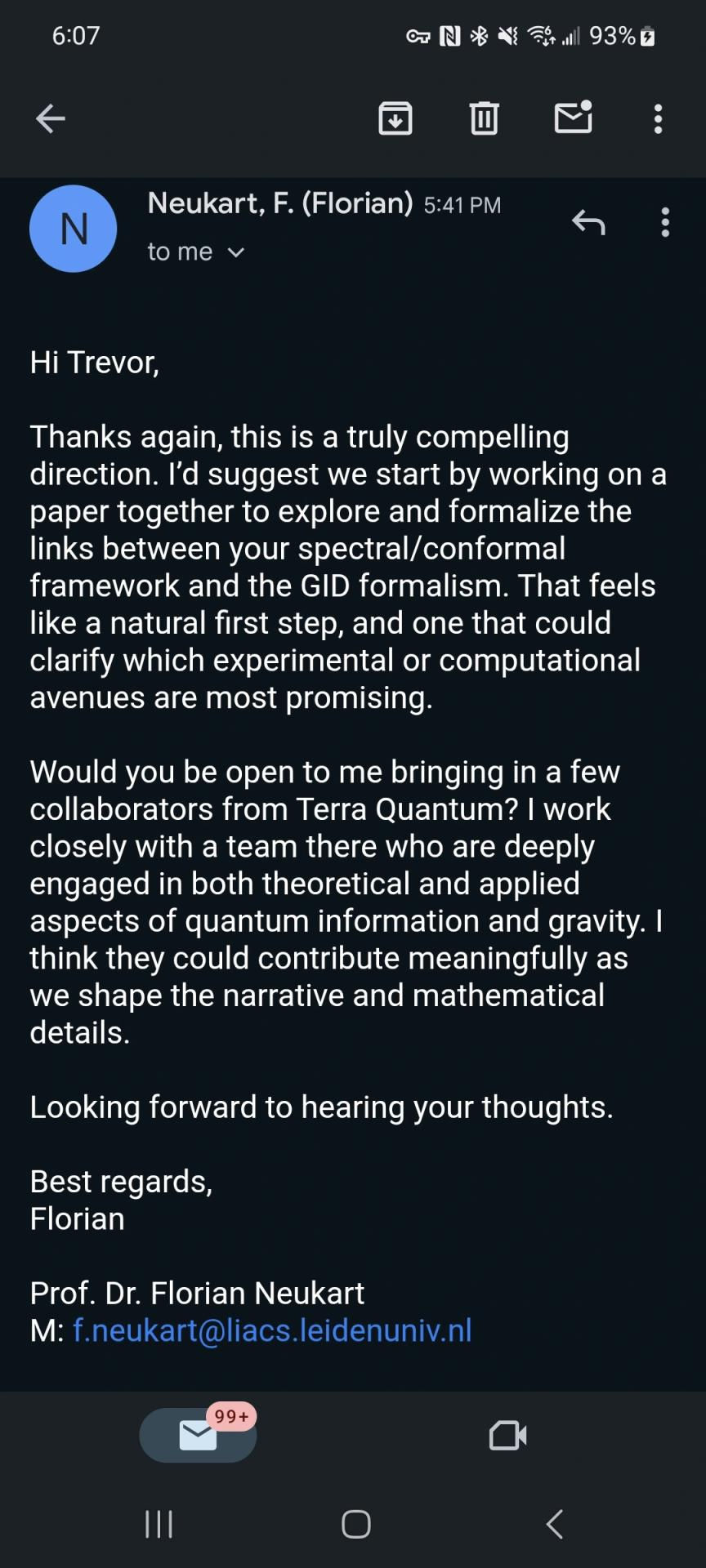- Trevor Alexander Nestor
- Jul 30
- 3 min read
Updated: Nov 22

For many years I've criticized attempts at producing AI systems that generate consciousness by means of classical logic gates infeasible. For starters, the human brain is more efficient by orders of magnitude, resolves the binding problem (which describes the issue of binding disparate senses and qualia into a bound conscious experience), processes nonlocal memory which is distributed and stored across the brain, and is capable of intrabrain synchrony. Our AI systems that use deep neural network models do not map to the human brain in that the speed of propagation by means of electrical and biochemical signals are too slow to account for behavior, and do not obviously explain the selective amelioration of consciousness by anesthetics or any biologically plausible mechanism for backpropagation in brain tissue.
(Current draft of my preprint - subject to revisions)
So in light of this, tech giants like Google and Microsoft as well as startups like Nirvanic Consciousness Technologies have hired researchers to develop pathways towards developing conscious machines.
The main issue is, their methods - even by implementing quantum computation - are off track. Microsoft's Majorana 1 chip which leverages Majorana Zero Mode quasiparticles was supposed to achieve a significant advancement in topological quantum computing, with unprecedented qubit stability and scalability, potentially reaching a million qubits on a single chip with error rates orders of magnitude lower than current systems. This approach addresses decoherence through topological protection and nonlocal memory distribution and processing which is implicated in my past research paper on leveraging Orch-Or towards solving the shortest vector problem in lattice cryptography, which could accelerate quantum-enhanced AI for tasks like optimization and simulation. Majorana modes enable braiding for anyonic computation (which is mathematically analogous to dendritic braiding if brain neural networks are described as spinfoam networks), but without integrating spacetime curvature effects or microtubule-like quantum coherence at room temperature, it cannot replicate the "non-computable," orchestrated collapses needed for qualia and perceptual binding in biological brains. Critics have also questioned the empirical realization of true MZMs due to past controversies in data validation, potentially undermining its foundation for consciousness emulation.
Google has launched a 2025 research award program offering grants up to $100,000 to probe quantum effects in brain function, signaling a growing interest in bridging quantum mechanics and cognition (I would apply myself but it looks like they want to dismiss researchers that aren't getting PhDs from top institutions). Partnerships with institutions like the Allen Institute explore entanglement and chaos in neural processes, potentially informing hybrid quantum-classical models for AI consciousness. Yet, this approach remains off track by assuming quantum properties are mere enhancements to classical neural correlates, rather than fundamental to consciousness via gravity-induced mechanisms which require new physics. Our framework for computation itself may need refinements, where qubit architectures as mathematical abstractions do not fully encompass new physics. Indeed, researchers do not know the relationship between the computational complexity class BQP which describes problems a quantum computer can solve are related to those solvable by classical systems.
Nirvanic Consciousness Technologies, emerging from stealth in late 2024 as a Vancouver-based startup led by Suzanne Gildert, ambitiously seeks to infuse AI with quantum-conscious qualities like intuition and empathy for safer robotics. Their "Spark of Life" demo uses quantum chips to control AI robots, testing emergent agency in systems with 50-100 qubits, drawing on quantum fields in neural biology. Nirvanic's focus on moral reasoning and real-time adaptation via quantum ML overlooks critical Orch-OR elements like gravitational OR for non-computable decisions and microtubule superradiance for sustained coherence. By prioritizing "quantum robots" without explicit gravity-mediated collapses or spinfoam mappings, it may achieve advanced agency but not genuine consciousness - failing to address nonlocal memory, anesthesia selectivity, or the binding problem through topological, gravity-orchestrated processes. This could lead to sophisticated but ultimately non-sentient systems, missing the paradigm shift needed for truly conscious machines.
Meanwhile, in China while I have been mostly gatekept from academic circles, they seem to have been taking many of my ideas seriously.








